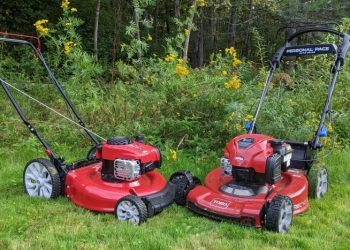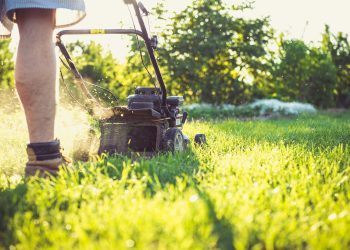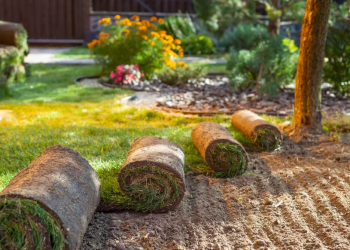Table of Contents
Fountains are an excellent way to add visual appeal to a pond. They increase the value of your home, and as an added benefit, they increase the level of oxygen in the water to keep your pond healthy. Using a fountain to aerate a pond is the best way to improve water clarity, water quality and reduce the number of harmful algae or weeds. Look for a fountain with an aesthetically pleasing design and the features you need to keep the pond water healthy, clean, and fresh.
Where Can You Buy a Fountain?
Trying to find the right fountain for your pond can be overwhelming with the vast selection of designs available on the market today. If you need a pond fountain, check out Living Water Aeration. For over 15 years, they have been providing quality, American-made merchandise to their customers, and they have a large, ever-growing inventory of fountains, water treatment products, and pond accessories. They have friendly, knowledgeable staff, and every team member is committed to their motto of integrity, honesty, and providing the highest-quality products possible.
Different Types of Pond Fountains
There are two main styles of pond fountains: aeration fountains and decorative fountains. Decorative fountains tend to focus more on special effects and features, such as different water patterns, visual appeal, and even interchangeable spray nozzles for intricate water patterns. Usually, they are selected for their fancy design features rather than function, so if your main goal is to aerate your pond, a decorative fountain may not be the best option.
Compared to a decorative style fountain, aeration fountains give greater volume, splashing, and movement, which ultimately provides more gallons per minute of water movement than a decorative fountain does. The most efficient pond fountains are shaped like the letter V, which provides better aeration and oxygen levels than other designs.
Some Considerations for Selecting the Right Style Fountain
When it’s time to purchase a fountain for your pond, there are a few considerations to keep in mind. Do your research to find out the correct measurements and specs for your particular pond. Otherwise, you might end up with the wrong size or product altogether. Aeration fountains should be used in water with a depth of six feet or less and best suited for ponds that are mostly round.
Also, consider the relative size of your pond. The bigger it is, the more power the fountain motor will need to aerate the water properly. The average spray height also depends on the size of your pond. A good rule of thumb to go by is a height no larger than half the pond’s width to keep the fountain from removing too much water.
Why is Having Oxygenated Water So Important?
No matter if it’s man-made, all-natural, large or small, every pond requires plentiful aeration and oxygen to stay healthy and have excellent water quality. Suppose you’re confused about what aeration is. It’s the process of mixing oxygen into the water, allowing for the water to have an adequate amount of oxygen for living organisms and plant life.
Hot weather can be particularly harmful to ponds because the heat can turn water stagnant, so it’s critical to have the right amount of oxygen and proper aeration during the summer months. The level of oxygen in your pond can also be affected by the barometric pressure, the type of aquatic plants it contains, and any harmful algae that can negatively impact water quality.
How do Fountains Work?
Aeration fountains work by raising water from the lowest depths of a pond and then bringing it high in the air to splash down on the surface, increasing the surface area and letting more oxygen mix with the water. The millions of bubbles created by the fountain bring oxygenated water all around the pond and up to the surface, keeping a pond at the ideal oxygen level.
Pond fountains are also a great way to combine the water on the pond’s bottom with the surface’s oxygen-rich water. This is critical to your pond’s health because the water on the bottom of your pond has the lowest amount of oxygen. It’s also important to remember pond fountains need to run all the time, even at night. Though fountains may look like a simple decoration, they’re actually vital to keep your pond’s water healthy, clear, and full of life-giving oxygen.
What Happens to Ponds with No Aeration?
Have you ever driven by a marsh or swamp with the windows open and wrinkled your nose at the smell? Well, that nasty smell is the result of anaerobic decomposition, which occurs when ponds get too low on oxygen. Having a low oxygen level in water creates prime conditions for harmful bacteria that just can’t survive in healthier water. Over time, those harmful bacteria can break down the waste and muck, but it’s a much slower process and gives off that wonderfully fragrant smell reminiscent of the creature from the black lagoon.
Even though the bacteria can complete the decomposition process, they have unfortunate byproducts of toxic sludge potentially containing methane, ammonia, and hydrogen sulfide, which gives off a lovely rotten egg smell. Suppose anaerobic decomposition is allowed to continue year after year, and the oxygen level isn’t increased to the proper level. In that case, the waste and sludge byproducts slowly build up more and more because it’s being created faster than the decomposition process can occur.
Benefits of Installing a Pond Fountain
One of the most significant benefits of a pond fountain is the improvement it brings to your pond’s general water quality. The added oxygen reduces algae blooms, muck, and sludge to keep your pond clean and healthy. If you want any fish, an aerated fountain system is a must. Fish need oxygen-rich water to live and breathe, and ponds, in particular, typically have low oxygen levels because they don’t have any natural water movement like a stream or brook. If you want fish in your pond, make sure you have the ideal conditions for them to live, grow, and thrive.
When you have adequate oxygen in the water, it helps breakdown a large amount of decaying and rotting organic debris and vegetation that accumulates on the bottom. Though there are beneficial bacteria and enzymes in the muck on the bottom of a pond that work to recycle the dead plant matter, it’s vital to get the proper aeration. It helps the bacteria digest the waste much more efficiently.
Keep Your Pond Healthy and Thriving with an Aerated Water Fountain
Adding an aerating fountain is one of the most beneficial things you can do for a pond, no matter what size or shape. A fountain provides increased oxygenation in your pond’s water, which improves water quality and allow fish and plants to flourish. Water with low oxygen levels can cause a buildup of sludge and harmful toxins and ultimately lowers your water’s overall quality. For the cleanest and healthiest water in a pond, try an aerated fountain and see the difference it makes.









